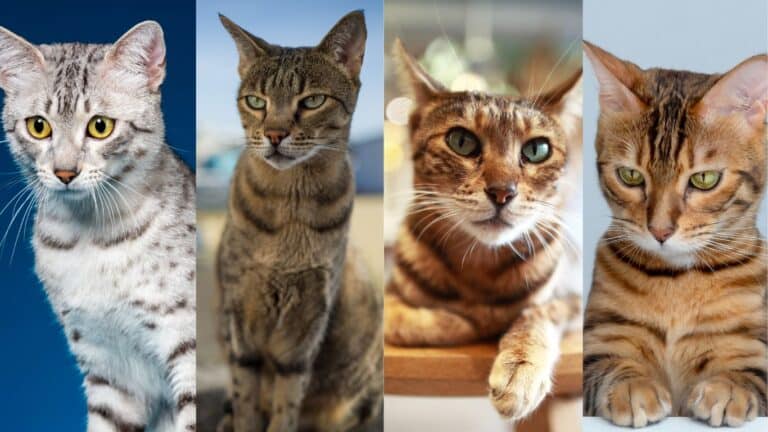Wild cats are some of the most beautiful and unique creatures on our planet. With 40 different species, each with its own distinct characteristics, these majestic animals captivate our hearts and minds. From the Rusty-spotted cat, the smallest wild cat breed, to the Siberian tiger, the largest of them all, wild cats never fail to leave us in awe.
In this article, we will take you on a journey through the world of wild cat breeds, where you will learn about their diverse species and discover fascinating facts about these incredible creatures. Are you ready to embark on this exciting adventure through the world of Wild Cat Breeds? Let’s get started.
Wild Wisdom Unleashed:
The 7 Big Cats: Largest and Most Iconic Wild Cat Species
The world of wild cats is home to an array of fascinating species, but the 7 big cats stand out as the largest and most iconic members of the Pantherinae subfamily.
These majestic creatures capture our imagination with their size, strength, and undeniable beauty. Each big cat possesses its own distinguishing features and habitats, making them remarkable and unique in their own right.
| Cat | Distinguishing Features | Habitat |
|---|---|---|
| Lion | Mane, distinctive roar | Grasslands and savannas of Africa |
| Tiger | Striped coat, powerful build | Various habitats across Asia |
| Jaguar | Solid coat with rosettes, strong jaws | American continents, predominantly in rainforests |
| Leopard | Rosettes on coat, exceptional climbing ability | Various habitats in Africa and Asia |
| Snow Leopard | Thick fur, long tail for balance | Mountainous regions of Central and South Asia |
| Clouded Leopard | Cloud-like markings on coat | Southeast Asia and parts of China |
| Sunda Clouded Leopard | Unique coat pattern, long canine teeth | Sumatra and Borneo |
No matter which of these big cats captures your imagination, their sheer presence and significance in the wild make them a sight to behold. From the regal lion to the elusive snow leopard, each cat exemplifies the magnificence of the wild cat world.

Small Cat Species: Delicate and Lesser-Known Wild Cats
While the world is familiar with the iconic big cats, the Felinae subfamily is home to a diverse range of 33 small cat species that often go unnoticed. These delicate and lesser-known wild cats have their own unique charm and fascinating characteristics. Let’s explore some of these captivating small cat species:
1. Borneo Bay Cat
The Borneo Bay Cat is a rare and elusive species found exclusively in the rainforests of Borneo. With its stunning red coat and captivating eyes, this small cat is a sight to behold.
2. Asiatic Golden Cat
The Asiatic Golden Cat is native to the forests and mountain ranges of Southeast Asia. With its striking reddish-brown fur and incredible agility, this cat is a true marvel of nature.
3. Marbled Cat
The Marbled Cat is known for its unique coat pattern, resembling a beautiful marble. Found in parts of Southeast Asia, this small cat possesses remarkable climbing and jumping abilities.
4. Serval
The Serval is a slender and elegant cat native to Africa. With its long legs and distinctive coat, this small cat has adapted to thrive in grasslands and wetland habitats.
5. African Golden Cat
The African Golden Cat, found in the forests of Central and West Africa, showcases a wide range of coat colors, including gold, red, and gray. This cat is known for its elusive nature and forest-dwelling habits.
6. Caracal
The Caracal, also known as the desert lynx, is a medium-sized cat with tufted ears and a sleek body. It is distributed across parts of Africa, the Middle East, and Central Asia.
7. Ocelot
The Ocelot is a beautiful cat native to the Americas. Its distinctive coat, resembling the markings of a leopard, offers excellent camouflage in the dense forests where it resides.
8. Margay
The Margay is another stunning small cat found in the rainforests of Central and South America. With its long tail and unique ability to rotate its ankles, it is highly adapted for arboreal life.
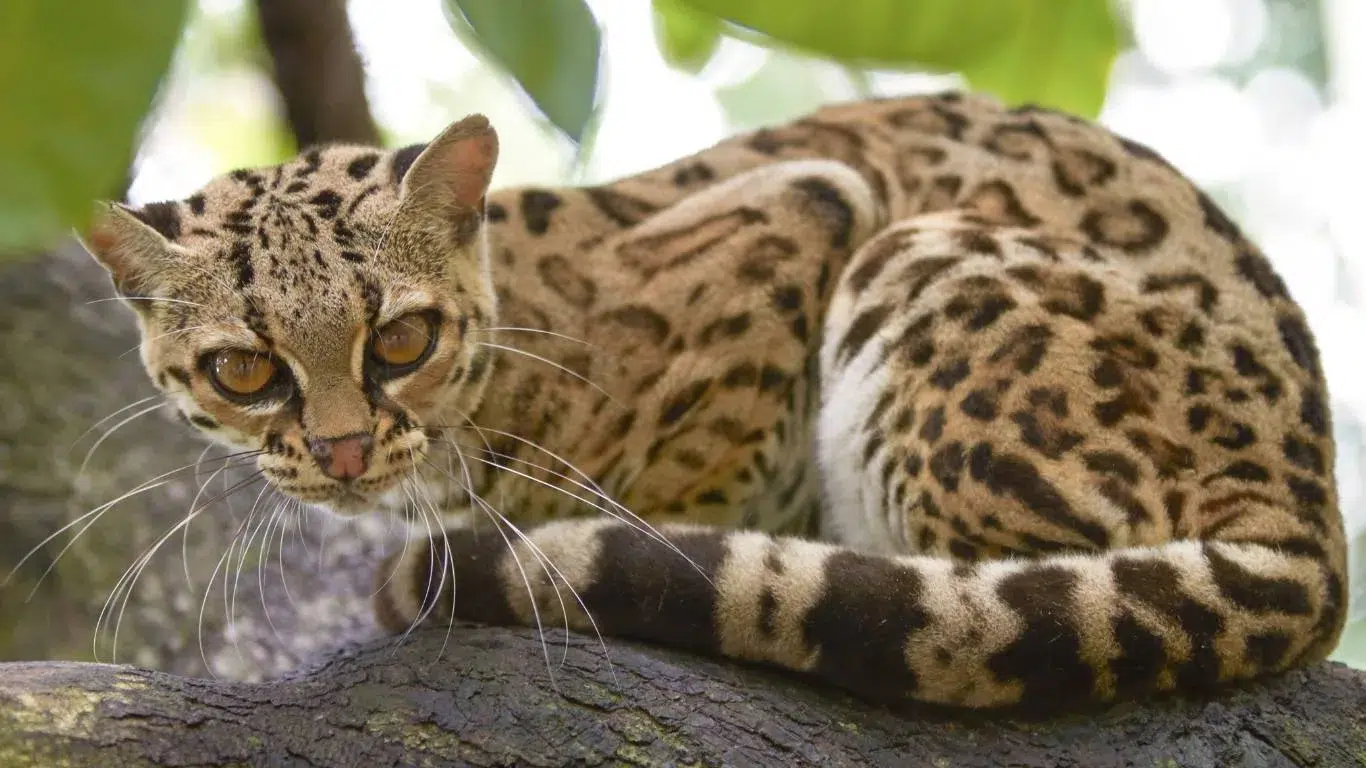
These are just a few examples of the remarkable small cat species that exist within the Felinae subfamily. Each of these cats has its own unique characteristics, habitats, and adaptations. Despite their delicate size, these lesser-known wild cats are a testament to the incredible diversity of the feline world.
| Small Cat Species | Native Region | Distinctive Features |
|---|---|---|
| Borneo Bay Cat | Borneo | Red coat, captivating eyes |
| Asiatic Golden Cat | Southeast Asia | Reddish-brown fur, agility |
| Marbled Cat | Southeast Asia | Unique coat pattern, climbing abilities |
| Serval | Africa | Long legs, grassland adaptability |
| African Golden Cat | Central and West Africa | Varied coat colors, forest dwelling |
| Caracal | Africa, Middle East, Central Asia | Tufted ears, slender body |
| Ocelot | Americas | Leopard-like markings, excellent camouflage |
| Margay | Central and South America | Long tail, ankle rotation for arboreal life |
Endangered Wild Cat Species: Threats to Survival
Unfortunately, many wild cat species, including various Wild Cat Breeds, are facing the risk of extinction. The IUCN Red List, a comprehensive database of threatened species, has identified several endangered wild cat species that are in urgent need of protection. These include the majestic tiger, the elusive Iberian lynx, the rare Borneo bay cat, the agile fishing cat, and the unique flat-headed cat.
These endangered Wild Cat Breeds are confronted with various threats that jeopardize their survival. Habitat loss due to deforestation, urbanization, and agricultural expansion is one of the primary challenges they face. As human populations continue to encroach upon natural habitats, the wild cats lose their crucial hunting grounds and territories.
Poaching also remains a significant threat to these endangered wild cat species. The demand for their pelts, bones, and other body parts in illegal wildlife trade drives the relentless killing of these magnificent creatures. Additionally, human-wildlife conflict is a pressing issue, especially in areas where wild cats come into contact with human settlements, leading to conflicts over resources and incidents of retaliation.
“The survival of endangered wild cat species is essential for maintaining the delicate balance of ecosystems and preserving biodiversity,” says Dr. Sarah Johnson from the Wild Cat Conservation Society“The survival of endangered wild cat species is essential for maintaining the delicate balance of ecosystems and preserving biodiversity,”
– Dr. Sarah Johnson from the Wild Cat Conservation Society
Efforts are being made globally to protect these endangered wild cat species and secure their future. Conservation organizations, governments, and local communities are working together to establish protected areas, promote sustainable land-use practices, and enforce stricter regulations against poaching and illegal wildlife trade.
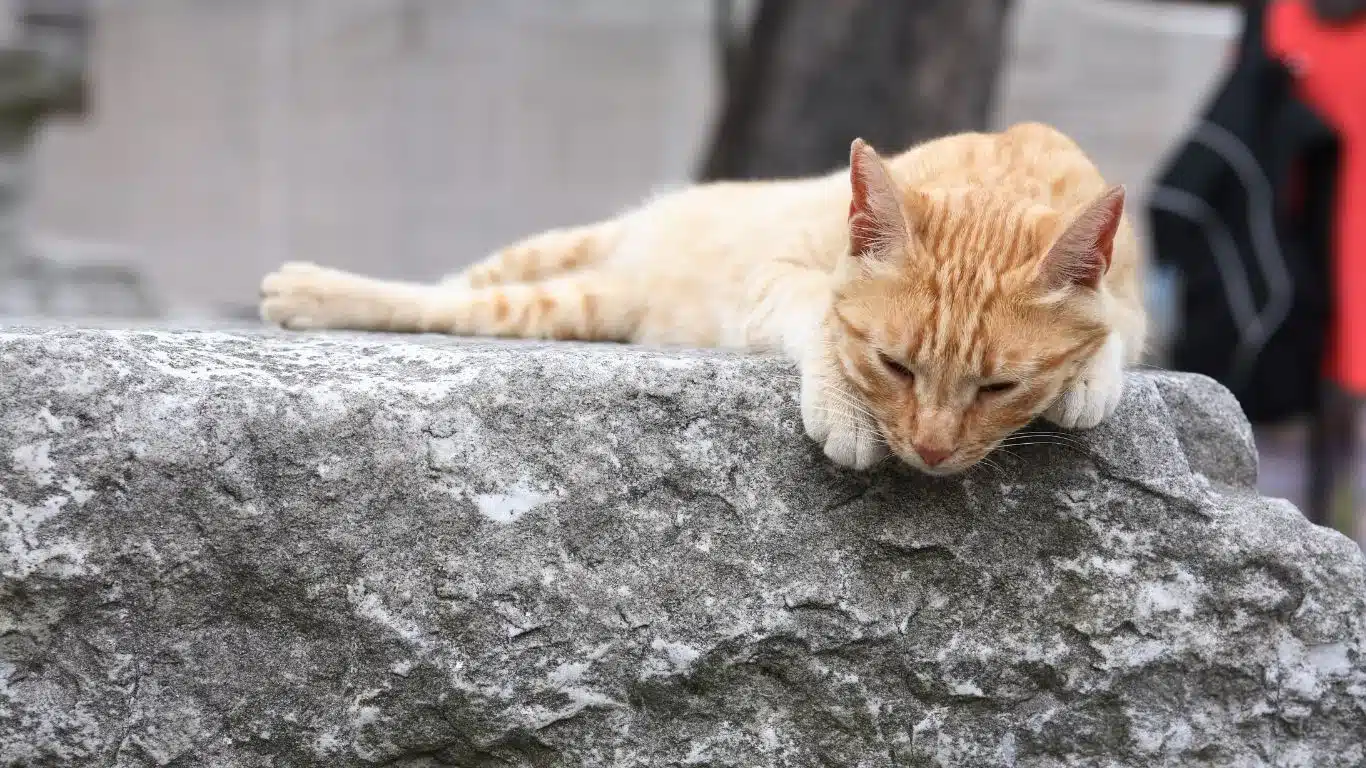
Research and monitoring initiatives aid in gathering valuable data on the populations, habitats, and behaviors of these endangered wild cats. This information is crucial for developing effective conservation strategies and implementing targeted initiatives for their protection.
By raising awareness about the plight of these endangered Wild Cat Breeds and supporting conservation efforts, we can contribute to their survival. Joining hands in safeguarding their habitats, combating poaching, and promoting sustainable practices ensures that future generations can witness the awe-inspiring beauty and importance of these magnificent Wild Cat Breeds
| Endangered Wild Cat Species | Status |
|---|---|
| Tiger | Endangered |
| Iberian Lynx | Endangered |
| Borneo Bay Cat | Endangered |
| Fishing Cat | Endangered |
| Flat-headed Cat | Endangered |
Unique Traits of Wild Cats: Adaptations for Survival
Wild cats are known for their fascinating and diverse range of traits and adaptations that enable them to thrive in their respective environments. From the extraordinary speed of the cheetah to the small size of the rusty-spotted cat, each wild cat possesses unique characteristics that contribute to their survival.
Cheetah Speed
The cheetah is renowned for its exceptional speed, making it the fastest land animal. It can reach speeds of up to 70 miles per hour in short bursts when chasing prey, enabling it to quickly outrun and capture its target.
Rusty-Spotted Cat Size
The rusty-spotted cat, native to India and Sri Lanka, is the smallest wild cat species, measuring around 14-19 inches in length. Its petite size allows it to navigate through dense vegetation and hunt small prey with precision.
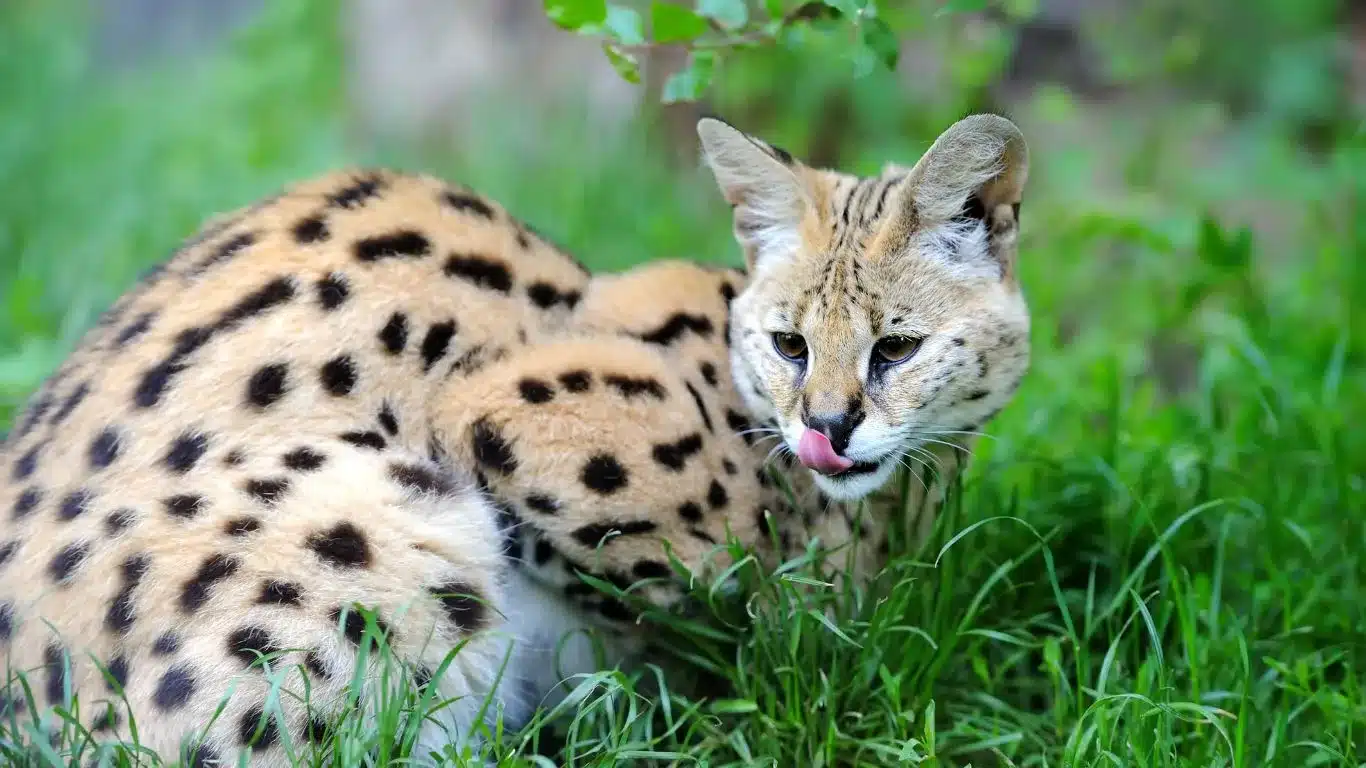
Sand Cat Desert Adaptations
The sand cat is specially adapted to survive in arid desert environments. With its thick fur and large, furry paws, it can withstand extreme temperatures and traverse the sandy dunes with ease. Its broad, densely furred feet act as natural snowshoes, preventing it from sinking into the soft desert sand.
Pallas Cat Fluffy Fur
The Pallas cat, also known as the manul, possesses an abundance of long, dense fur that helps it survive the harsh, cold climates of Central Asia. Its fluffy fur provides insulation and keeps it warm in temperatures as low as -40 degrees Celsius.
Fishing Cat Swimming Ability
The fishing cat, native to South and Southeast Asia, is uniquely adapted to a semi-aquatic lifestyle. It has webbed feet and is an excellent swimmer, allowing it to easily navigate through water bodies in search of prey such as fish and amphibians.
Snow Leopard Long Tail
The snow leopard, found in the mountainous regions of Central and South Asia, possesses a long and thick tail. This tail acts as a counterbalance, aiding the leopard’s balance as it traverses steep terrain and making precise leaps during hunts.
Siberian Tiger Size and Strength
The Siberian tiger, also known as the Amur tiger, is the largest and strongest of all wild cat species. With males weighing up to 660 pounds and measuring over 10 feet in length, these majestic creatures are well adapted for hunting large prey and dominating their territories.
These unique traits and adaptations of wild cats showcase their remarkable ability to adapt to various environments and ensure their survival in the wild. Whether it’s the cheetah’s speed, the rusty-spotted cat’s size, or the Siberian tiger’s strength, each wild cat species has evolved to thrive in its specific habitat.

Notable Wild Cat Sightings and Conservation Efforts: Protecting Endangered Species
Wild cat sightings are rare and exciting, especially when it comes to elusive and endangered species. These remarkable encounters serve as reminders of the importance of conservation efforts to protect these incredible animals and ensure their survival for future generations.
Conservation organizations around the world are working tirelessly to safeguard wild cat populations and their habitats. Through innovative initiatives, these organizations are making a significant impact in preserving endangered species. Let’s take a look at some notable success stories in wild cat conservation:
- Iberian Lynx: Once on the brink of extinction, the Iberian lynx population has seen a remarkable recovery. Thanks to dedicated conservation efforts, including habitat restoration and captive breeding programs, this critically endangered species has witnessed a significant increase in numbers.
- Cheetahs: Captive breeding programs have played a crucial role in the conservation of cheetah populations. These programs aim to ensure genetic diversity and increase the overall population of this vulnerable species.
“Conservation efforts are vital to protect these amazing animals and ensure their survival.”
By raising awareness and implementing conservation measures, we can contribute to the preservation and protection of these magnificent wild cat species. The success stories of the Iberian lynx and the captive breeding programs for cheetahs serve as inspiring examples of what can be achieved with dedicated conservation efforts.
Let us strive to continue these conservation endeavors and work towards a future where all wild cat species can thrive and roam freely in their natural habitats.
Extremes of the Cat World: Smallest, Fluffiest, and More
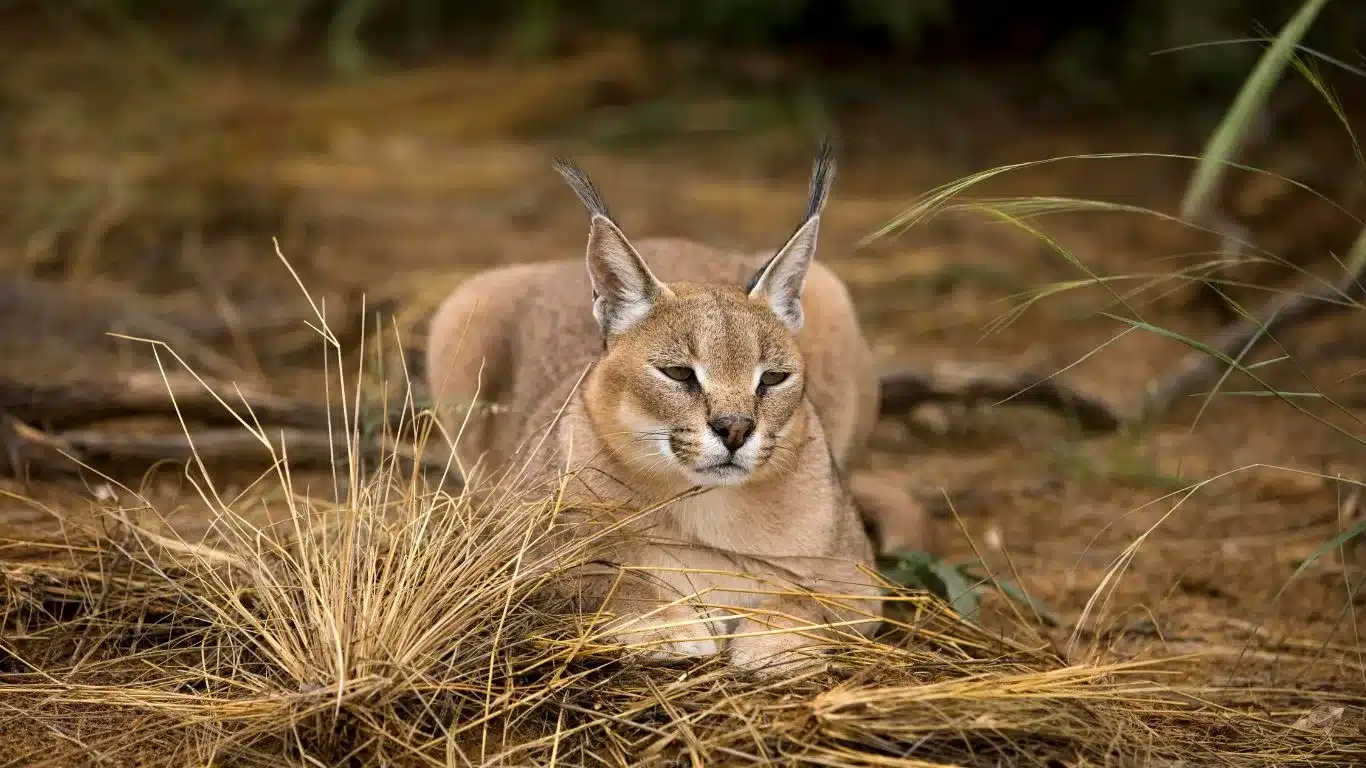
The cat world is home to some extraordinary extremes, showcasing the diversity and remarkable adaptations of different wild cat species. From the cheetah’s speed record to the Siberian tiger’s sheer size, let’s explore these fascinating extremes:
Cheetah: Speed Record
The cheetah holds the title for the fastest land mammal, capable of reaching speeds up to 70 miles per hour (113 kilometers per hour). Its slender body, long legs, and non-retractable claws contribute to its exceptional speed, allowing it to chase and capture prey with impressive agility.
Rusty-spotted Cat: Smallest Cat
The rusty-spotted cat, native to Sri Lanka and India, is the smallest wild cat species in the world. Weighing just 3.5 pounds (1.6 kilograms) and measuring around 19 inches (48 centimeters) in length, this adorable cat is a true miniature marvel.
Sand Cat: Desert Adaptations
Living in the harsh desert environments of North Africa and the Middle East, the sand cat has a range of adaptations that help it thrive in extreme heat. Its thick fur provides insulation, while long hairs on the pads of its paws protect it from hot sand. With the ability to survive without drinking water for long periods, the sand cat is a true desert dweller.
Pallas Cat: Fluffiest Fur
The Pallas cat, also known as the manul, boasts an incredibly fluffy coat that helps it withstand the cold climates of Central Asia. Its dense fur provides insulation, and its long, bushy tail acts as a warm wrap when the temperatures drop.
Fishing Cat: Aquatic Abilities
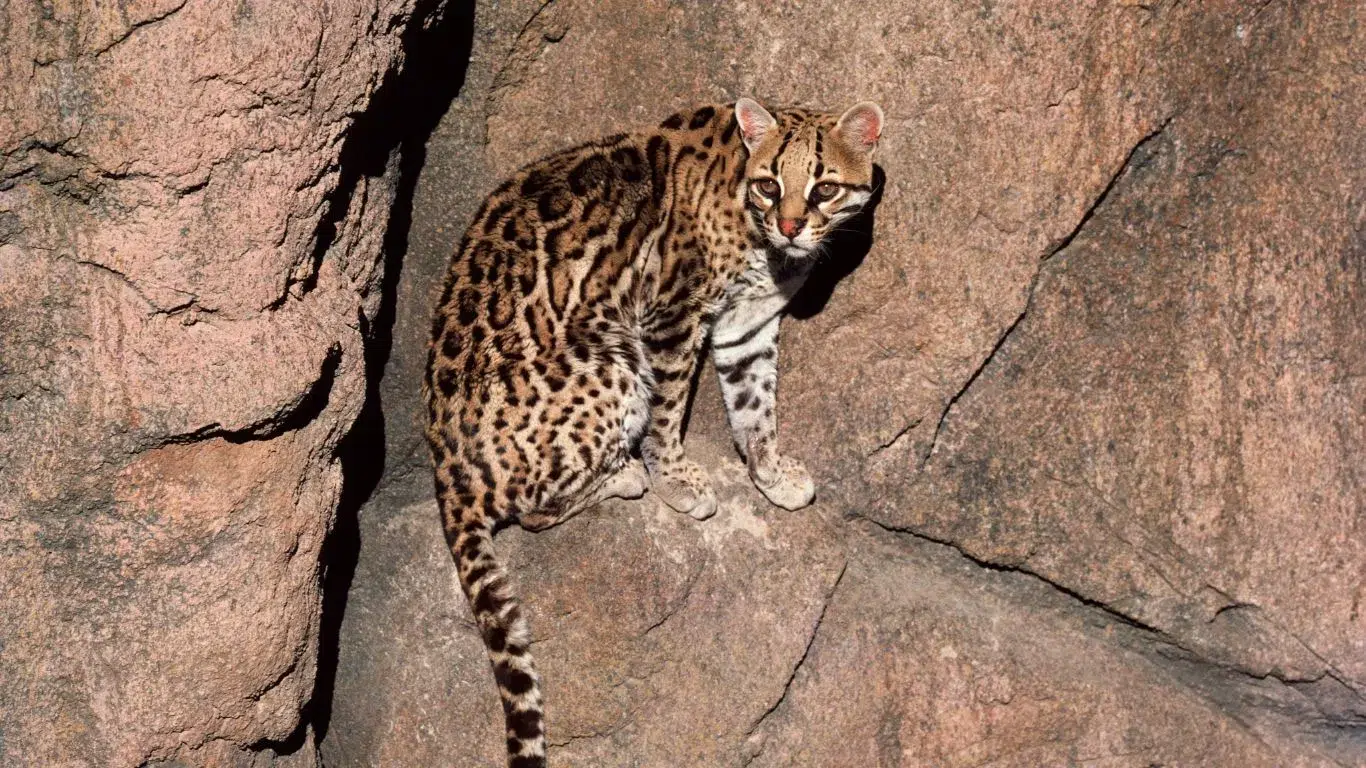
The fishing cat is uniquely adapted for a semi-aquatic lifestyle. With partially webbed feet and dense fur that keeps it buoyant, this cat is a skilled swimmer and diver. It uses its sharp claws to catch fish, earning its name as a master fisherman.
Snow Leopard: Tail Length
The snow leopard possesses a long, thick tail that serves multiple purposes. It acts as a counterbalance while navigating rocky terrain, provides warmth during cold winters, and can be wrapped around the body for added insulation. The snow leopard’s tail can grow up to 3 feet (90 centimeters) in length.
Siberian Tiger: Largest Cat
The Siberian tiger, also known as the Amur tiger, is the largest cat in the world. Males can weigh up to 660 pounds (300 kilograms) and measure over 10 feet (3 meters) in length. Their muscular build and striking orange fur make them an awe-inspiring sight.
These extremes of the cat world highlight the incredible adaptations and characteristics of different wild cat species, reminding us of the beauty and diversity found in the animal kingdom.
Captivating Facts about Wild Cats: From Speed to Hunting Techniques
Wild cats are truly remarkable creatures, filled with captivating facts that pique our curiosity. Each wild cat species possesses unique qualities that contribute to their survival and captivate our imagination. Let’s delve into some fascinating facts about wild cats, encompassing their incredible speed, swimming abilities, stealth, social behavior, and hunting techniques.
The Cheetah’s Incredible Speed
The cheetah holds the title for being the fastest land animal, capable of reaching speeds up to 70 miles per hour in just a few seconds. This unparalleled speed enables the cheetah to chase down its prey with unmatched agility and precision.
The Jaguar’s Impressive Swimming Abilities
Jaguars are unique among wild cats as they possess remarkable swimming abilities. They are known to navigate through water bodies with ease, whether crossing rivers or hunting for aquatic prey. Their muscular build and powerful limbs make them efficient swimmers.
The Leopard’s Stealthy Nature
Leopards are unparalleled when it comes to stealth and camouflage. Their spotted coat allows them to seamlessly blend in with their surroundings, making them virtually invisible to both prey and predators. This stealthy nature gives them a distinct advantage in their hunting endeavors.
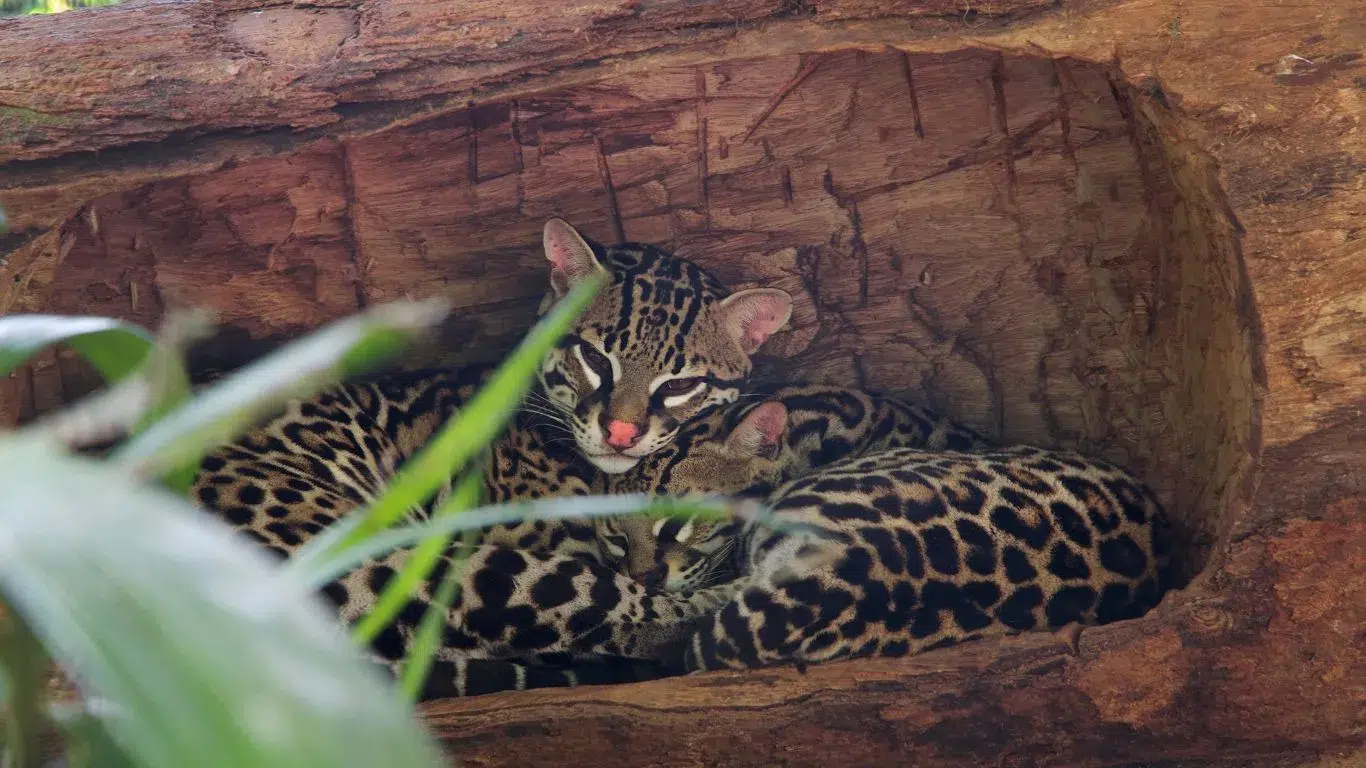
The Lion’s Social Behavior
Lions are known for their social nature, living in groups called prides. Within a pride, lions cooperate and coordinate their hunting efforts, allowing them to take down larger prey. This social structure contributes to their overall success and survival in the wild.
The Tiger’s Strategic Hunting Techniques
Tigers are apex predators, known for their strategic hunting techniques. With their exceptional strength, they are capable of taking down prey significantly larger than themselves. Tigers are known for their stealthy approach, carefully stalking their target before launching a powerful and precise attack.
These captivating facts underscore the awe-inspiring nature of wild cats. From the cheetah’s speed to the jaguar’s swimming abilities, the leopard’s stealth, the lion’s social behavior, and the tiger’s hunting techniques, each wild cat species possesses distinctive qualities that contribute to their survival and ignite our fascination.
Join the Pet Planet Diaries
Sign up for our newsletter to get the latest tips, stories, and exclusive insights into the wonderful world of pets.
Final Remarks: Appreciating the Diversity and Wonder of Wild Cat Breeds
The world of wild cat breeds is a mesmerizing tapestry of biodiversity and wonder. Each species, from the smallest to the largest, possesses a unique array of traits and adaptations that make them truly remarkable. It is through our appreciation and understanding of these wild cats that we can foster a sense of awe and reverence for the natural world.
Conservation plays a crucial role in safeguarding the future of these magnificent creatures. By protecting their habitats and raising awareness about the importance of biodiversity, we pave the way for a sustainable coexistence with these captivating felines. Our collective efforts can ensure that the beauty and splendor of wild cat breeds continue to thrive for generations to come.
Let us embrace the call to action and support conservation initiatives aimed at preserving the biodiversity of these awe-inspiring creatures. Together, we can make a tangible difference in their survival, fostering a world where wild cat breeds remain an integral part of our shared natural heritage. Appreciate, protect, and celebrate the diversity of wild cat species – a testament to the astonishing wonders of our planet.
FAQ
How many species of wild cats are there?
There are 40 species of wild cats in the world.
What are the 7 big cats?
The 7 big cats are the lion, tiger, jaguar, leopard, snow leopard, clouded leopard, and Sunda clouded leopard.
How many small cat species are there?
There are 33 small cat species in the Felinae subfamily.
Which wild cat species are endangered?
The tiger, Iberian lynx, Borneo bay cat, fishing cat, and flat-headed cat are endangered.
What unique traits do wild cats have?
Wild cats have various unique traits such as speed in cheetahs, small size in rusty-spotted cats, desert adaptations in sand cats, fluffy fur in Pallas cats, swimming ability in fishing cats, long tail in snow leopards, and impressive size and strength in Siberian tigers.
Are there any notable wild cat sightings?
Yes, wild cat sightings are rare and exciting, especially for elusive and endangered species. Conservation efforts are vital to protect these amazing animals and ensure their survival.
Which wild cat holds the record for speed?
The cheetah holds the record for being the fastest cat.
What are some captivating facts about wild cats?
Wild cats have fascinating qualities such as the jaguar’s swimming abilities, the leopard’s stealth, the lion’s social behavior, and the tiger’s hunting techniques.


